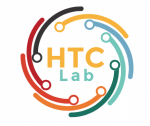Since Wing’s (2006) article regarding computational thinking, there has been a dramatic increase in the focus on computational thinking (CT) in K-12 education. Computational thinking has permeated across K-12 classrooms, particularly at the elementary level. In a review of the state of the field of computational thinking in K-12, Grover and Pea (2013) described the research on CT as mainly focused on definitional issues, descriptions of environments and tools that foster CT, and assessment of CT. They called for a need to address large gaps in our knowledge around CT, including the cognitive aspects of CT and how CT can be integrated into other subjects. Several articles have provided suggestions on how to integrate CT (e.g., Yadav, Hong, & Stephenson, 2016). In a meta-review of 120 studies on CT published between 2006 to 2017, Hsu, Chang, and Hung (2018) found that most of these studies were situated within programming (n=31) or computer science (n=26) contexts. The other contexts where CT was studied included math (n=11), biology (n=9), and robotics (n=8). Many of these studies usually focused on students at the secondary and post-secondary levels….
www.acm.org/binaries/content/assets/education/ct_prek-5_web.pdf
- Automatic Large Language Models Creation of Interactive Learning Lessons - June 29, 2025
- AI as Governance - June 29, 2025
- A Systematic Review of Human-AI Co-Creativity - June 27, 2025
